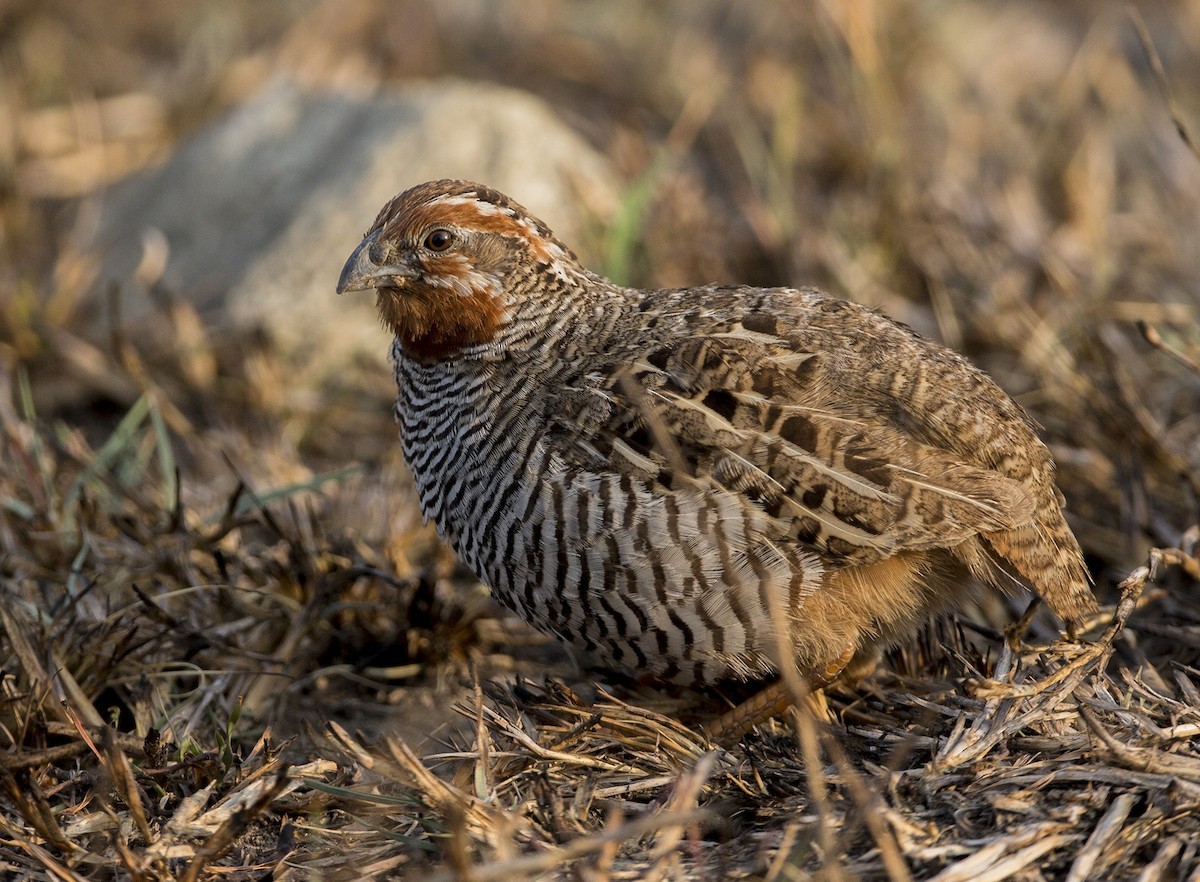Jungle Bush Quail
A species of Bush-quails Scientific name : Perdicula asiatica Genus : Bush-quails
Jungle Bush Quail, A species of Bush-quails
Botanical name: Perdicula asiatica
Genus: Bush-quails
Content
Description General Info
 Photo By Rofikul Islam
Photo By Rofikul Islam Description
The jungle bush quail (Perdicula asiatica) is a species of quail found in the Indian subcontinent, ranging across India, Nepal, Bangladesh, Pakistan and Sri Lanka. Very different from the female, the male jungle bush quail has a white moustache, heavily barred white underparts, and variegated wings. The female has a uniform, rich chestnut breast and belly. However, both the male and the female have red and white streaks on the head. It is roughly 6.3–7.2 in (16–18 cm) in length and weighs 2–2.85 oz (57–81 g). The diet of the jungle bush quail consists mainly of seeds. particularly of grasses, although it also takes insects. Breeding takes place after the rains and lasts until the onset of colder weather, with the precise period varying across the range; five or six eggs are produced and incubation takes between 16 and 18 days. The species is not globally threatened as it has an extensive range and tends to avoid agricultural areas. The population in Sri Lanka has contracted since the 1950s, but is thought to be widespread and common elsewhere in the range. The jungle bush quail is largely sedentary, although the birds in Nepal are thought to migrate in winter. 
Size
18 cm
Nest Placement
Ground
Feeding Habits
Jungle Bush Quail's diet consists of seeds from grasses, herbs, gram, and millet, supplemented with insects. They forage in groups of 6–25, highlighting social feeding behavior. No unusual dietary adaptations are noted.
Habitat
Jungle Bush Quail is typically found in arid to semi-arid environments, preferring habitats that extend through dry scrub and brush areas. These habitats are frequently stony and cover a spectrum from sparse grasslands to relatively thick deciduous woodlands. They are common in the broader geographical regions of the Asian subcontinent, typically in areas with lower canopy cover and where underbrush provides adequate cover.
Dite type
Granivorous
General Info
Feeding Habits
Bird food type

 Photo By Rofikul Islam
Photo By Rofikul Islam